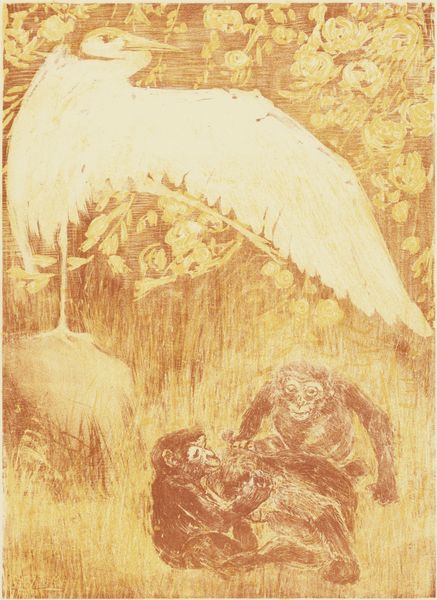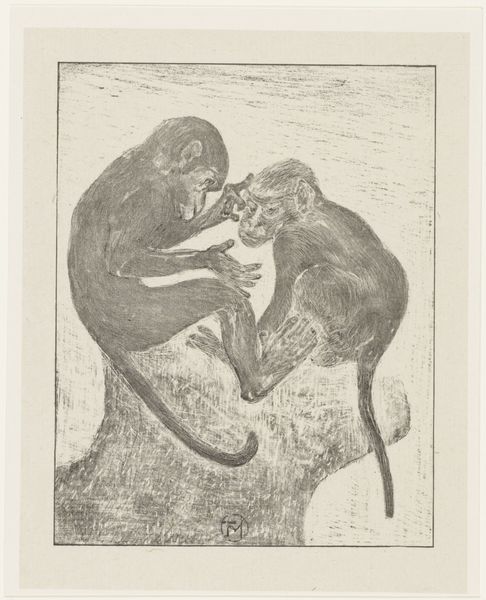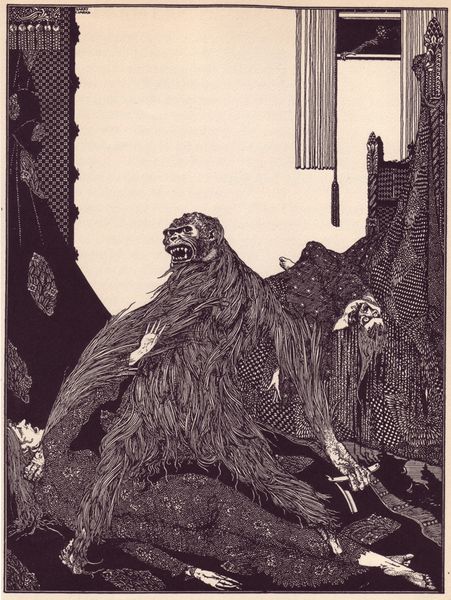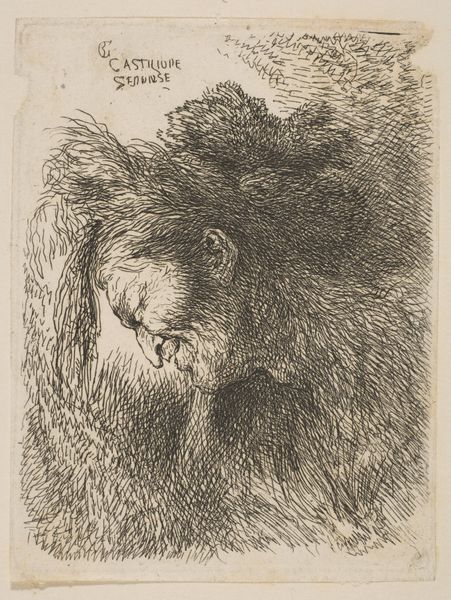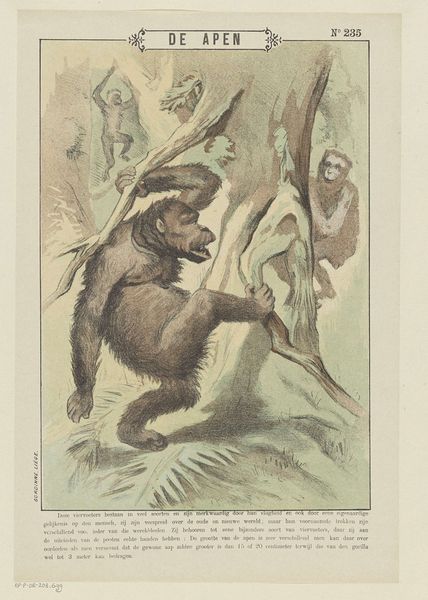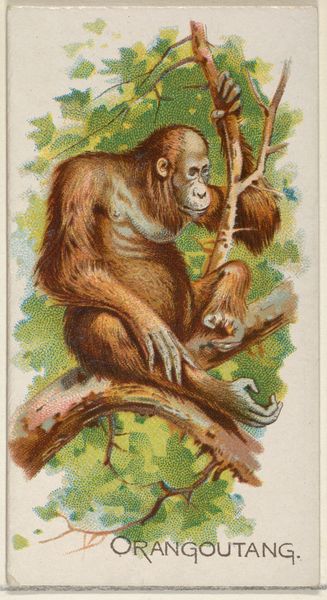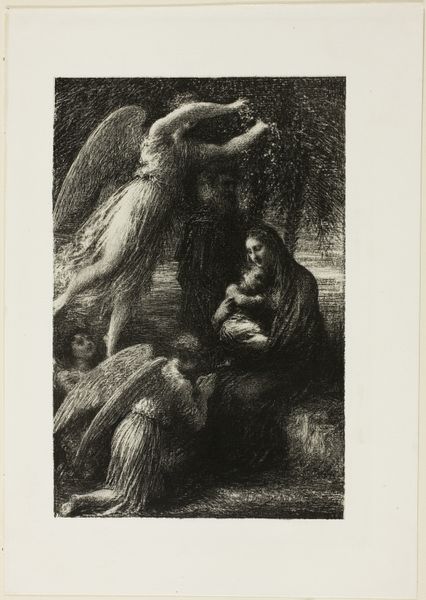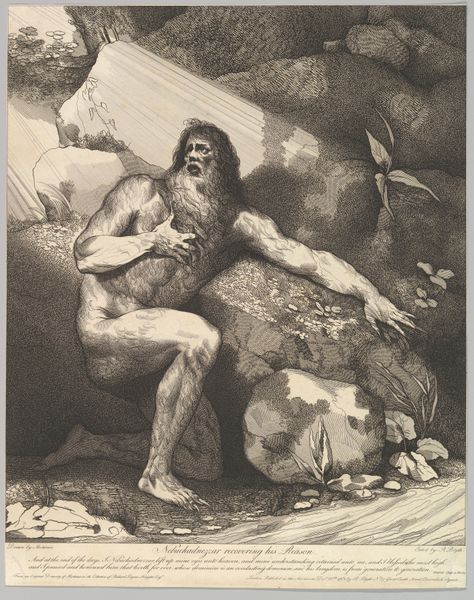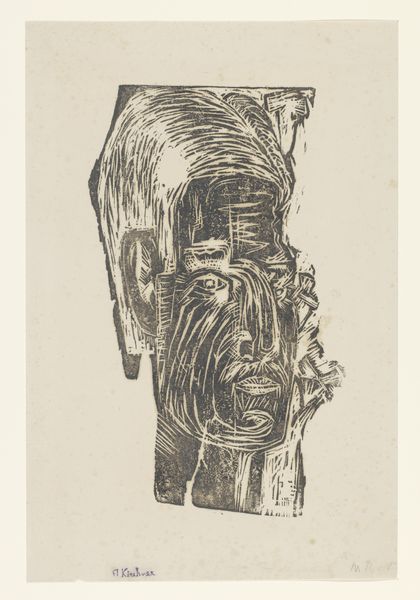
drawing, coloured-pencil
#
drawing
#
coloured-pencil
#
coloured pencil
#
symbolism
Dimensions: height 222 mm, width 167 mm, height 425 mm, width 302 mm
Copyright: Rijks Museum: Open Domain
Theo van Hoytema made this lithograph, "Vlooiende apen," or "Grooming Monkeys," in the late 19th or early 20th century. Hoytema was well known for his lithographs of birds and other animals. Hoytema's work invites us to reflect on our relationship to the natural world, but also, perhaps, our relationships to one another. The act of grooming is often interpreted as a sign of affection and social bonding in primates. It's hard not to see a reflection of human behavior in their actions. Where do we see primates? Often, we see them in zoos, and while they might be offered some version of a natural habitat, they are still in cages. Hoytema worked during a period when evolutionary theory was gaining traction, leading to debates about humanity's place in the natural order. What does it mean to see ourselves mirrored in these primates? What unspoken assumptions do we bring when we look at these monkeys? This lithograph makes me consider the complex ways we understand our own identities in relation to the animal kingdom.
Comments
No comments
Be the first to comment and join the conversation on the ultimate creative platform.

